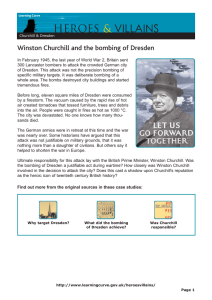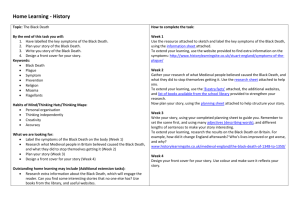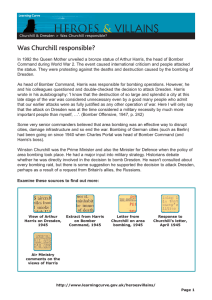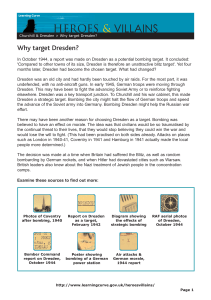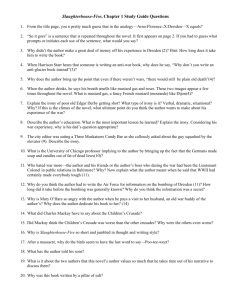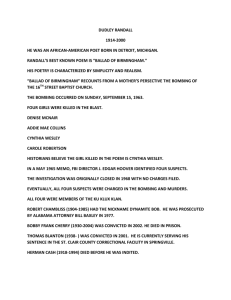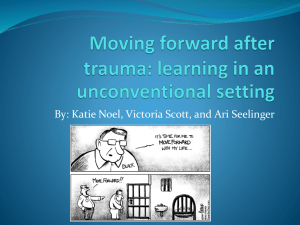Victoria Historian
advertisement
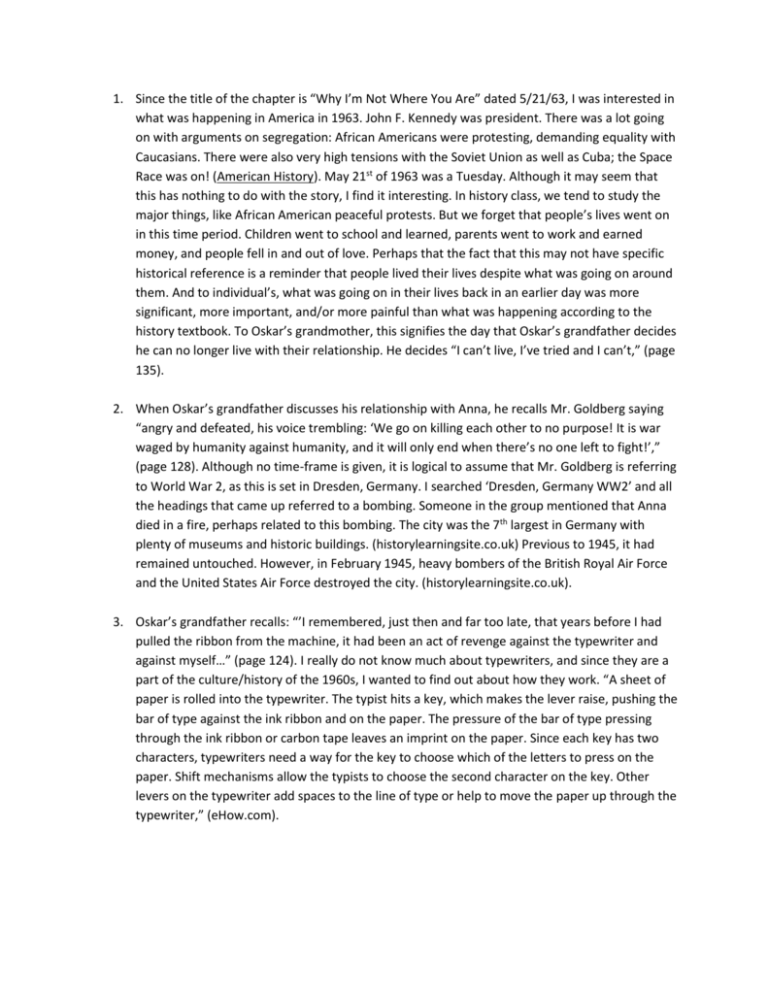
1. Since the title of the chapter is “Why I’m Not Where You Are” dated 5/21/63, I was interested in what was happening in America in 1963. John F. Kennedy was president. There was a lot going on with arguments on segregation: African Americans were protesting, demanding equality with Caucasians. There were also very high tensions with the Soviet Union as well as Cuba; the Space Race was on! (American History). May 21st of 1963 was a Tuesday. Although it may seem that this has nothing to do with the story, I find it interesting. In history class, we tend to study the major things, like African American peaceful protests. But we forget that people’s lives went on in this time period. Children went to school and learned, parents went to work and earned money, and people fell in and out of love. Perhaps that the fact that this may not have specific historical reference is a reminder that people lived their lives despite what was going on around them. And to individual’s, what was going on in their lives back in an earlier day was more significant, more important, and/or more painful than what was happening according to the history textbook. To Oskar’s grandmother, this signifies the day that Oskar’s grandfather decides he can no longer live with their relationship. He decides “I can’t live, I’ve tried and I can’t,” (page 135). 2. When Oskar’s grandfather discusses his relationship with Anna, he recalls Mr. Goldberg saying “angry and defeated, his voice trembling: ‘We go on killing each other to no purpose! It is war waged by humanity against humanity, and it will only end when there’s no one left to fight!’,” (page 128). Although no time-frame is given, it is logical to assume that Mr. Goldberg is referring to World War 2, as this is set in Dresden, Germany. I searched ‘Dresden, Germany WW2’ and all the headings that came up referred to a bombing. Someone in the group mentioned that Anna died in a fire, perhaps related to this bombing. The city was the 7th largest in Germany with plenty of museums and historic buildings. (historylearningsite.co.uk) Previous to 1945, it had remained untouched. However, in February 1945, heavy bombers of the British Royal Air Force and the United States Air Force destroyed the city. (historylearningsite.co.uk). 3. Oskar’s grandfather recalls: “’I remembered, just then and far too late, that years before I had pulled the ribbon from the machine, it had been an act of revenge against the typewriter and against myself…” (page 124). I really do not know much about typewriters, and since they are a part of the culture/history of the 1960s, I wanted to find out about how they work. “A sheet of paper is rolled into the typewriter. The typist hits a key, which makes the lever raise, pushing the bar of type against the ink ribbon and on the paper. The pressure of the bar of type pressing through the ink ribbon or carbon tape leaves an imprint on the paper. Since each key has two characters, typewriters need a way for the key to choose which of the letters to press on the paper. Shift mechanisms allow the typists to choose the second character on the key. Other levers on the typewriter add spaces to the line of type or help to move the paper up through the typewriter,” (eHow.com). Works Cited Brinkley, Alan. American History a Survey. 12th ed. Boston: McGraw-Hill, 2007. Print. Chris, Trueman. "The Bombing of Dresden." The Bombing of Dresden. Historylearningsite.co.uk, 2000. Web. 27 Sept. 2012. <http://www.historylearningsite.co.uk/bombing_of_dresden.htm>. Johnson, Ann. "How Does a Typewriter Work?" EHow. Demand Media, 05 Nov. 2008. Web. 27 Sept. 2012. <http://www.ehow.com/how-does_4588435_a-typewriter-work.html>.
